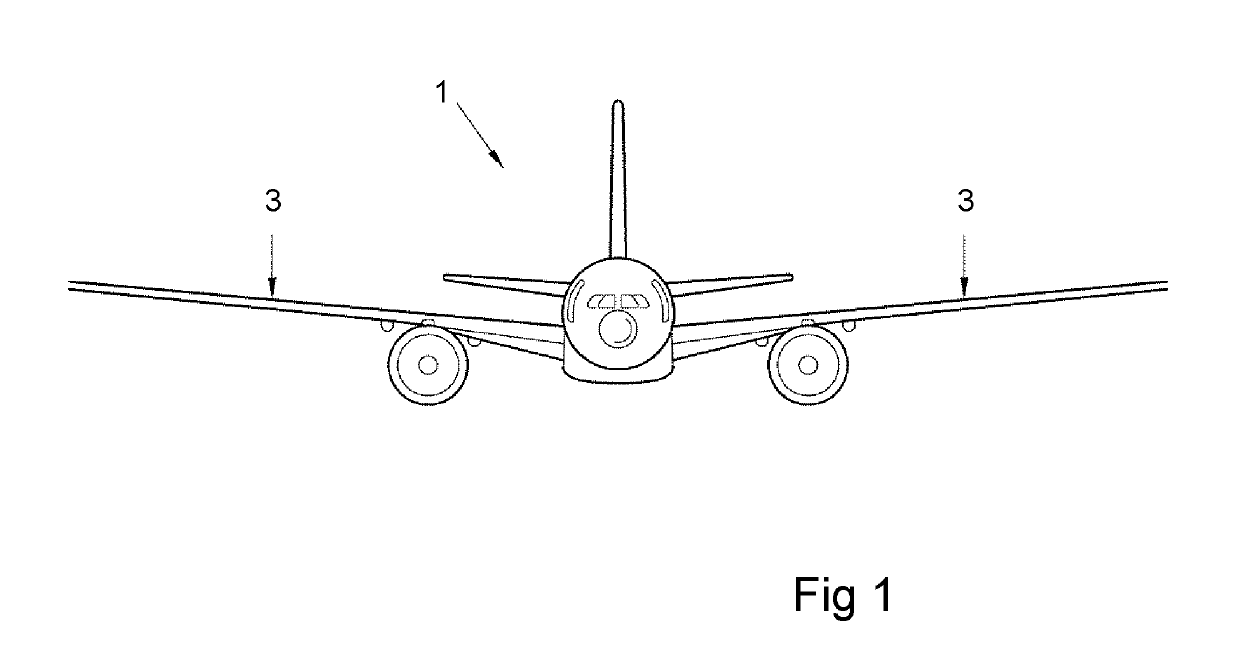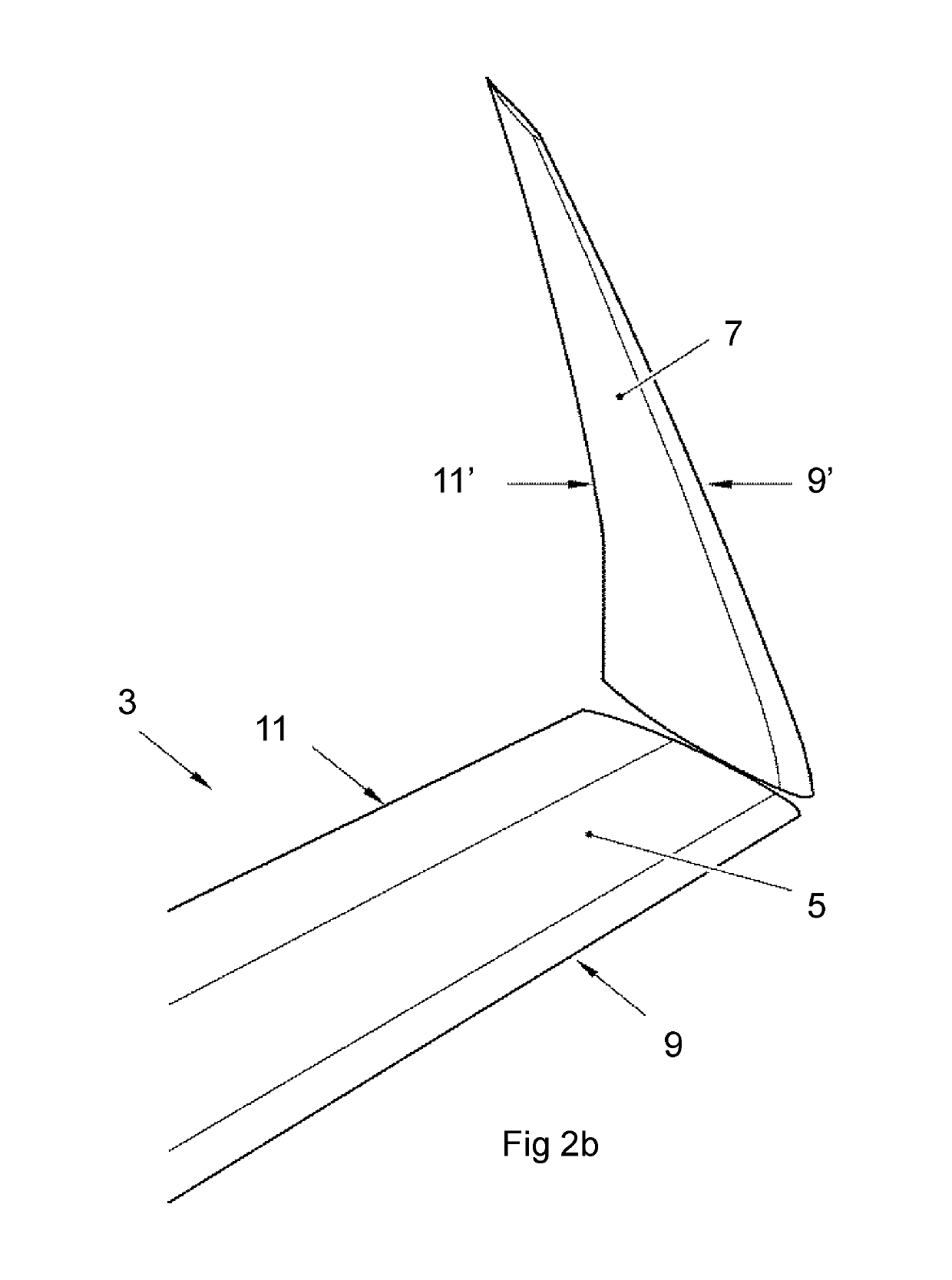Actuation assembly with a track and follower for use in moving a wing tip device on an aircraft wing
a technology of actuation assembly and track, which is applied in the direction of wing adjustment, drag reduction, etc., can solve the problem that the follower is substantially inability to react to the load into the sliding chassis, and achieve the effect of reducing vibration
- Summary
- Abstract
- Description
- Claims
- Application Information
AI Technical Summary
Benefits of technology
Problems solved by technology
Method used
Image
Examples
Embodiment Construction
[0064]FIG. 1 is a schematic drawing showing an aircraft 1 having aircraft wings 3 according to a first embodiment of the invention. The end of one of the wings 3 on the aircraft 1 is shown in more detail in FIGS. 2a and 2b, to which reference is now made:
[0065]The wing 3 comprises a fixed wing 5 extending from the wing root at the aircraft fuselage, to a tip. At the tip of the fixed wing 5 there is a wing tip device 7. The wing tip device 7 is moveable between a flight configuration (shown in FIG. 2a) and a ground configuration (shown in FIG. 2b).
[0066]In the flight configuration the wing tip device 7 is effectively an extension of the fixed wing 5, such that the leading and trailing edges 9′, 11′ of the wing tip device are continuations of the leading and trailing edges 9, 11 of the fixed wing 5, and the upper and lower surfaces of the wing tip device 7 are continuations of the upper and lower surfaces of the fixed wing 5. The fixed wing and the wing tip device together form a main...
PUM
 Login to View More
Login to View More Abstract
Description
Claims
Application Information
 Login to View More
Login to View More - R&D
- Intellectual Property
- Life Sciences
- Materials
- Tech Scout
- Unparalleled Data Quality
- Higher Quality Content
- 60% Fewer Hallucinations
Browse by: Latest US Patents, China's latest patents, Technical Efficacy Thesaurus, Application Domain, Technology Topic, Popular Technical Reports.
© 2025 PatSnap. All rights reserved.Legal|Privacy policy|Modern Slavery Act Transparency Statement|Sitemap|About US| Contact US: help@patsnap.com



